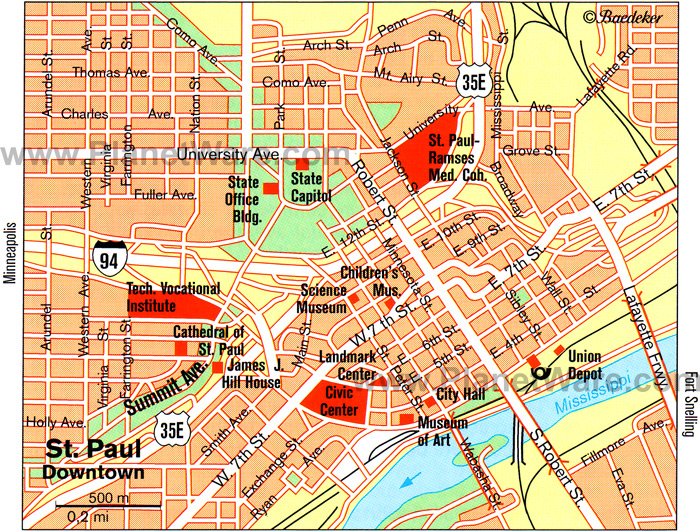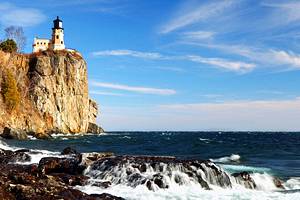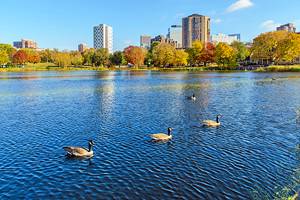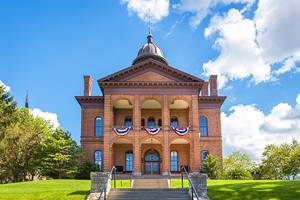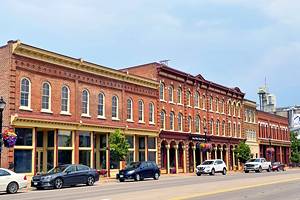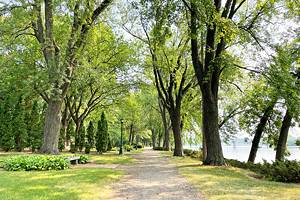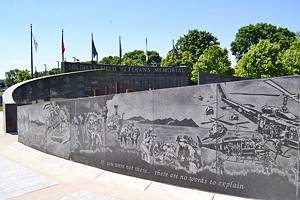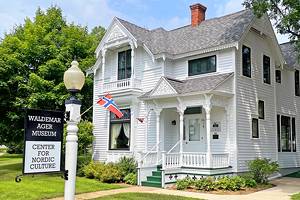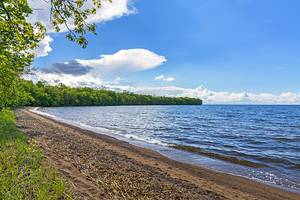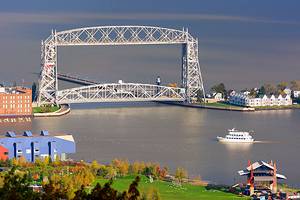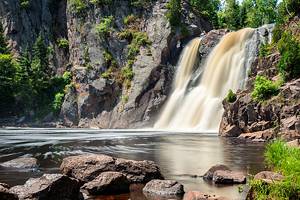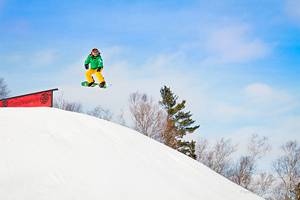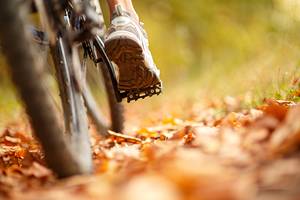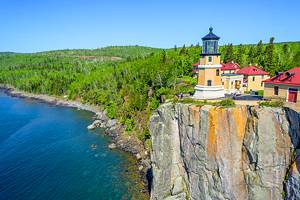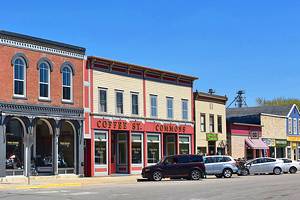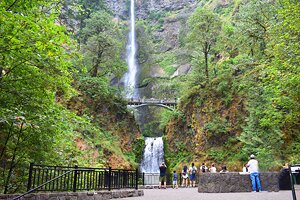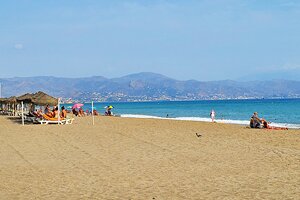16 Top-Rated Things to Do in St. Paul, MN
St. Paul and Minneapolis jointly form the Twin Cities, but St. Paul is the state capital and very different in character from Minneapolis.
St. Paul is spaciously laid out, built on terraces above the Mississippi, with more of an old frontier town atmosphere.
St. Paul's crowning jewel is the Cathedral of St. Paul, which overlooks the downtown area, and the impressive Golden Age mansions of Summit Avenue add to the city's architectural grandeur. St. Paul is packed with historic tourist attractions, including the opulent James J. Hill House, the reconstructed grounds of Fort Snelling, and the Gibbs Museum living-history farm.
The area also offers plenty of things to do for families, including an excellent zoo with a neighboring amusement park, a science museum, and a children's museum.
For more ideas on the best places to visit, read our list of the best things to do in St. Paul.
See also: Where to Stay in Saint Paul
- 1. See the Victorian Buildings on Summit Avenue
- 2. Visit the Como Park Zoo and Conservatory
- 3. Cathedral of St. Paul
- 4. Science Museum of Minnesota
- 5. Minnesota History Center
- 6. State Capitol
- 7. Take a Tour of James J. Hill House
- 8. Explore the Mississippi National River and Recreation Area
- 9. Landmark Center
- 10. Fort Snelling
- 11. Take the Kids to the Minnesota Children's Museum
- 12. Alexander Ramsey House
- 13. Gibbs Museum of Pioneer and Dakotah Life
- 14. Bruce Vento Regional Trail & Wildlife Sanctuary
- 15. Minnesota Transportation Museum
- 16. Fitzgerald Theater
- Where to Stay in Saint Paul for Sightseeing
- Map of Things to Do in St. Paul, MN
- Saint Paul, MN - Climate Chart
1. See the Victorian Buildings on Summit Avenue
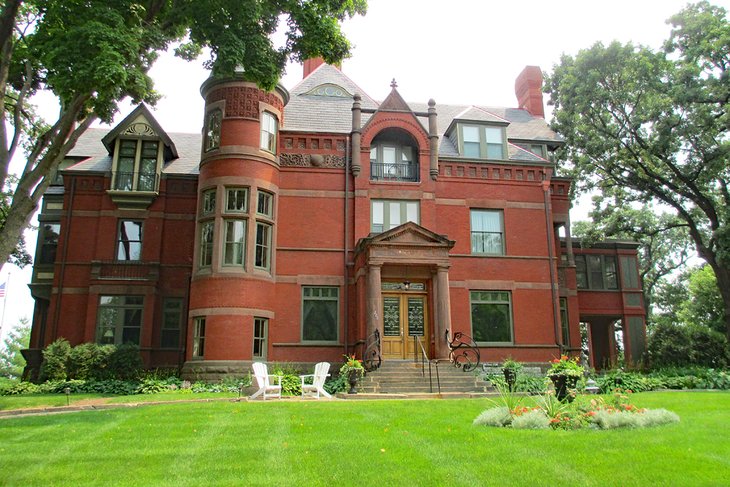
Summit Avenue is home to the largest and longest collection of Victorian buildings in the United States, with 373 of its original 440 historic mansions still standing. Built from the mid-19th century through the first decades of the 20th century, these were the homes of St. Paul's millionaires, who made their fortunes in industry.
Running east to west, Summit Avenue begins with the city's most prominent landmark, the Cathedral of St. Paul, which is a scale version of St. Peter's Basilica in the Vatican and sits at downtown's highest point. From here, it stretches 4.5 miles where it ends at the Mississippi River.
Close to the cathedral, you will also find the James J. Hill House, which was built by the founder of the Great Northern Railroad, another major tourist attraction.
2. Visit the Como Park Zoo and Conservatory
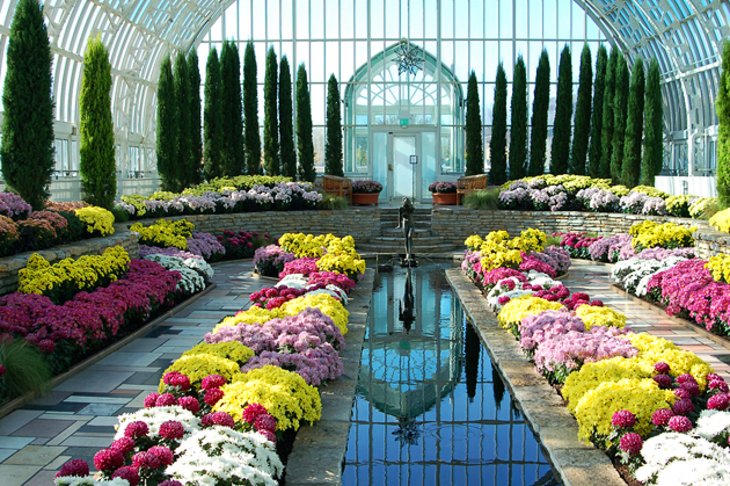
Como Park Conservatory in St. Paul was built in 1915 and now houses a wide variety of animals in natural habitats, including big cats like lions and snow leopards, primates like gorillas and spider monkeys, and family favorites like sloths and zebras.
The zoo is also home to water-loving animals like sea lions, seals, and penguins, and tropical critters including anaconda and the Galapagos tortoise.
One of the most popular attractions for kids at the Como Park Zoo is the giraffe feeding station, where you can get face to face with these gentle herbivores. There is also a special frog habitat, which focuses on conservation, as well as an educational gallery created for younger children and multiple gardens, including a butterfly garden, an orchid house, water gardens, and a bonsai collection.
Just next door to the zoo, you will find Como Town, a family amusement park with rides, a zipline, kids' activities, and entertainment.
Address: 1225 Estabrook Drive, St. Paul, Minnesota
Official site: www.comozooconservatory.org
3. Cathedral of St. Paul
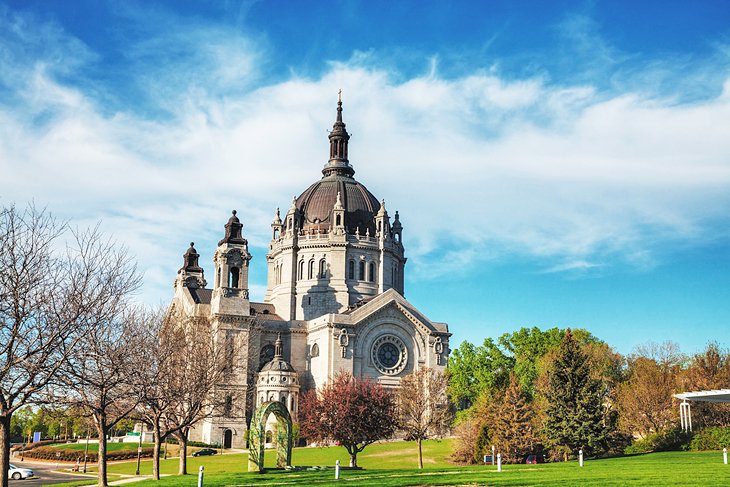
The construction of the Classical Renaissance-style Cathedral of St. Paul, modeled after St. Peter's Basilica in the Vatican City, began in 1906. The first services were held in 1915, and it took another 30 years to complete the interior. It is the National Shrine of the Apostle Paul, so named by the Vatican in 2009, and is a pilgrimage site for many Catholics.
The cathedral can seat 3,000 people and regularly hosts concerts throughout the year. These include organ performances on the cathedral's two Skinner organs, performances by the Minnesota Orchestra, and choral arrangements.
Of special note is the Shrine of the Nations surrounding the sanctuary, symbolizing the contributions of immigrants in the history of the cathedral.
Address: 239 Selby Avenue, St. Paul, Minnesota
Official site: www.cathedralsaintpaul.org
4. Science Museum of Minnesota
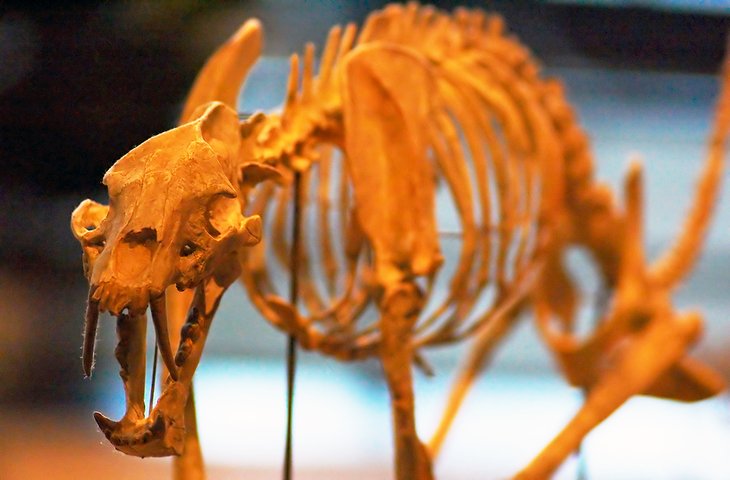
The Science Museum of Minnesota offers hands-on exhibits that allow visitors to walk under a dinosaur, board a Mississippi River towboat, learn about the human body, and participate in the Experiment Gallery where you can create your own tornado.
Within the museum's impressive dinosaur exhibit, you will see the reconstructed remains of a real Triceratops (one of only four in the world), as well as recreated scenes of life-size dinos hunting.
The museum also looks at science within the context of history, from a real Egyptian mummy to a look at the lives of Native Americans. Other permanent and changing exhibits stimulate curiosity, and the museum also houses an Omni theater, which presents various films on its massive screen.
Address: 120 West Kellogg Boulevard, St. Paul, Minnesota
Official site: www.smm.org
5. Minnesota History Center
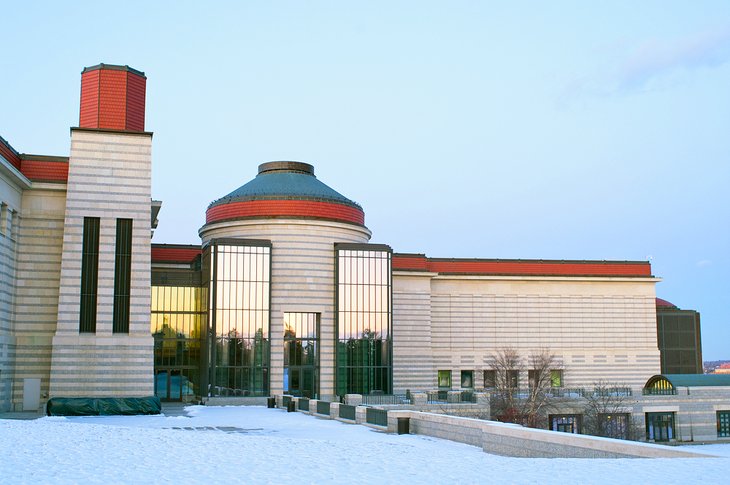
The Minnesota History Center focuses on the history and features of the state. Permanent and changing exhibits cover topics from the Civil War to how climate change has affected the state. In addition, the center also offers lectures, workshops, activities for families, and hosts various events.
Highlights include the full-size replica "Jenny" airplane suspended from the ceiling of the main rotunda, and the excellent views of the Minnesota State Capitol building, which can be seen from the Great Hall. The history center also houses the Gale Family Library, with a series of changing displays that focus on various aspects of the state's history.
Address: 345 West Kellogg Boulevard, St. Paul, Minnesota
Official site: www.mnhs.org/historycenter
6. State Capitol
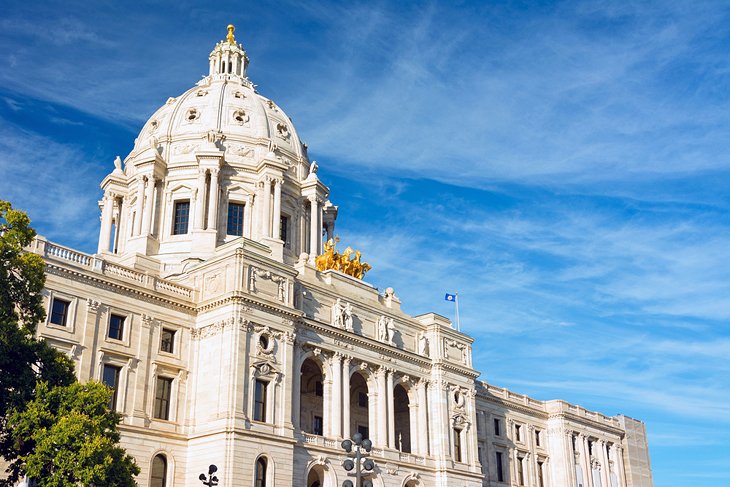
The marble dome of the State Capitol, constructed in 1905, is a prominent feature and an architectural highlight of St. Paul. The original furnishings can be found in the restored Senate, House, Supreme Court, and Rathskeller cafe.
Hourly guided sightseeing tours describe the building's architecture, history, restoration, and decorative art, and visitors are also able to take a self-guided tour.
Highlights include the self-supported marble dome, which is the second-largest of its kind in the world, and when the weather cooperates, tourists may also get a close look at the iconic Quadriga, the golden horses that adorn the roof.
Address: 75 Rev. Dr. Martin Luther King Jr. Boulevard, St. Paul, Minnesota
Official site: www.mnhs.org/capitol
7. Take a Tour of James J. Hill House
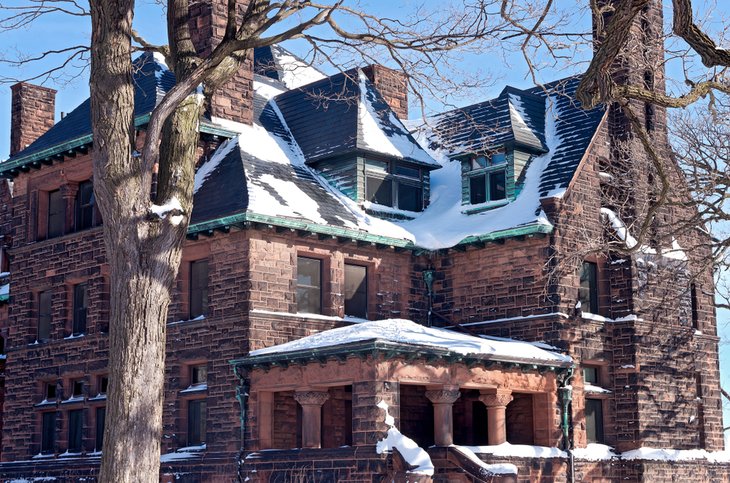
James J. Hill House, situated on Summit Avenue near St. Paul's Cathedral, was built by the founder of the Great Northern Railroad. Completed in 1891, this red sandstone Richardsonian Romanesque-style mansion was the largest home in the state, measuring 36,000 square feet. Among its plentiful rooms, this Gilded Age mansion features a 100-foot reception hall, a two-story art gallery, and 13 bathrooms.
Visitors can take a guided tour of the house or wander through the first floor's art gallery, which displays works of Minnesota artists. A number of events are held at the property each year, from concerts to an Easter egg hunt on the grounds.
Address: 240 Summit Avenue, St. Paul, Minnesota
Official site: www.mnhs.org/hillhouse
8. Explore the Mississippi National River and Recreation Area
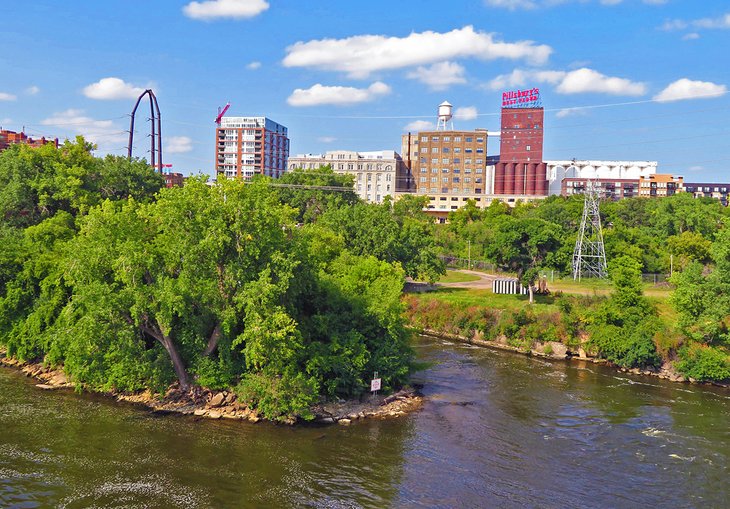
The Mississippi National River and Recreation Area occupies a 72-mile stretch of the upper Mississippi River, providing numerous trails and nature-viewing opportunities. There are several visitor centers throughout the park, however the main information center is located within the Science Museum of Minnesota.
The park is home to a diverse population of plant and animal life, and visitors can enjoy it from both the land and the water, with plenty of access points for canoes and kayaks. Those interested in fishing will find hundreds of species, including varieties of sturgeon, bass, perch, herring, and trout.
The park is particularly popular with bird-watchers who come to see both native and migratory species, including eagles, hawks, osprey, ducks, geese, terns, sandpipers, heron, and owl. There is also a variety of mammal life, including deer and beavers, as well as a population of river otters who have come back from near-extinction after hunting and habitat loss threatened the species.
Official site: www.nps.gov/miss/index.htm
9. Landmark Center
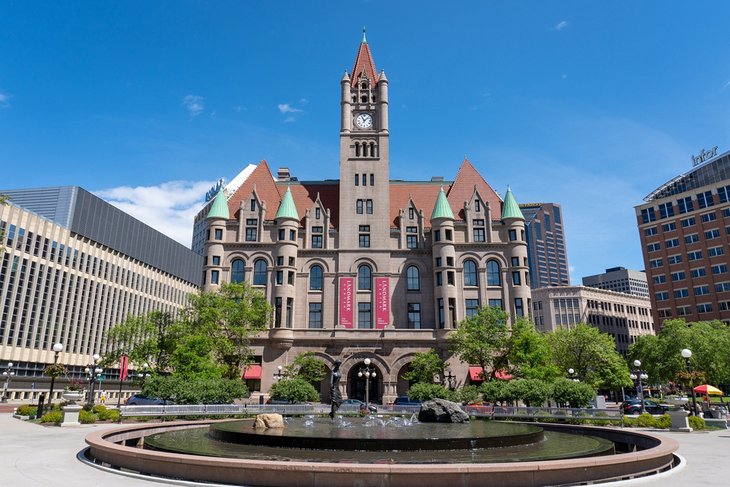
The Landmark Center is housed in the finely restored 1902 Federal Court Building, an impressive and photo-worthy building that now contains restaurants, galleries, function rooms, and performance spaces, which host theater and dance productions, as well as concerts.
The building generally serves as a cultural center, but visitors can appreciate the history and architecture of the building by taking one of the several guided tours available. Visitors can also learn more about the center in Landmark Gallery, a permanent exhibit that outlines significant historical events that took place here, from Federal Court cases to community events.
Address: 75 West 5th Street, St. Paul, Minnesota
Official site: www.landmarkcenter.org
10. Fort Snelling
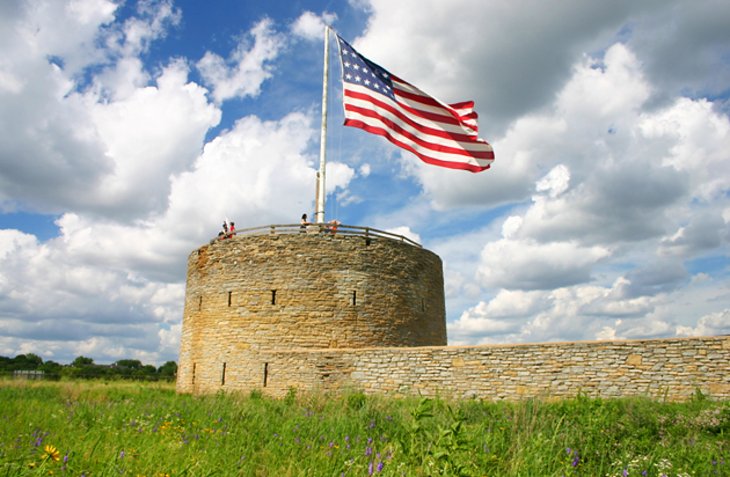
Fort Snelling, located near the airport, recalls the frontier days of the early nineteenth century. This restored limestone fort was the northernmost military outpost of the United States in the early 19th century. Its position at the junction of the Minnesota and Mississippi Rivers made it a significant strategic post for the military, as well as an important trade hub.
Excavations of the fort area first began in 1957 and continue still, uncovering a wide range of archaeological finds, which shed light on both military and civilian life in and around the fort.
More than a dozen restored buildings are open to the public, displaying various artifacts found on-site, as well as providing contextual information like maps, artwork, and early photos. Among these buildings are the commandant's house, barracks, a sutler's house, and a hospital.
Address: Junction of Highway 5 and 55, St. Paul, Minnesota
Official site: www.historicfortsnelling.org
11. Take the Kids to the Minnesota Children's Museum
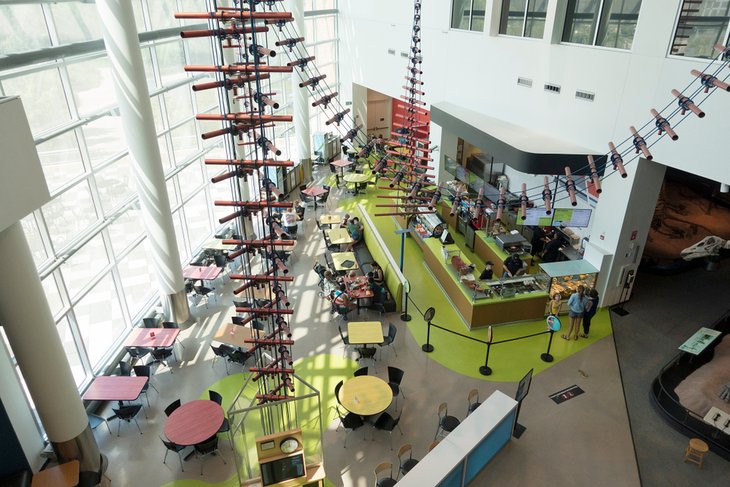
The Minnesota Children's Museum provides a fun, educational experience for younger children, a great option for families looking for something to do on a rainy day in St. Paul. For the littlest ones, the "Sprouts" area is designed for babies and toddlers to safely play and explore, while older siblings visit the museum's many interactive exhibits.
Highlights include the Dinosaur Train, where kids can take a turn as the engineer while learning about fossils, and the four-story playscape, which encourages children to get active and climb, slide, and shimmy their way through. Other adventures include a laser maze, a green-screen climbing wall, and a series of balancing challenges.
The museum also encourages hands-on creativity with an engineering station; a "musical playground," where they can make as much noise as they want; and an arts and crafts area brimming with materials to create anything from paintings to a fabric masterpiece.
Address: 10 West Seventh Street, St. Paul, Minnesota
Official site: www.mcm.org
12. Alexander Ramsey House
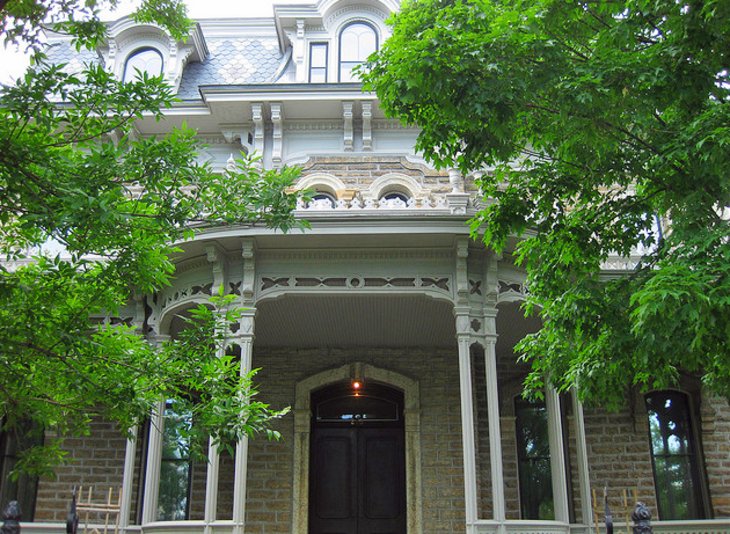
Alexander Ramsey was mayor of St. Paul, the second governor of Minnesota, and the founder of the Minnesota Historical Society to which his grandchildren bequeathed the historic home upon their death in 1964. The Victorian home was built in 1872 of native limestone and contains portraits, furnishings, and personal belongings of the Ramsey family.
The home is extremely well-preserved, restored to its original condition thanks to the perseverance of his heirs who took care to save any elements of the house that were updated during its use.
The building and its collections offer insight into the lifestyle of the governor during this time period, and it is listed on the National Register of Historic Places.
Address: 265 South Exchange Street, St. Paul, Minnesota
Official site: www.mnhs.org/ramseyhouse
13. Gibbs Museum of Pioneer and Dakotah Life
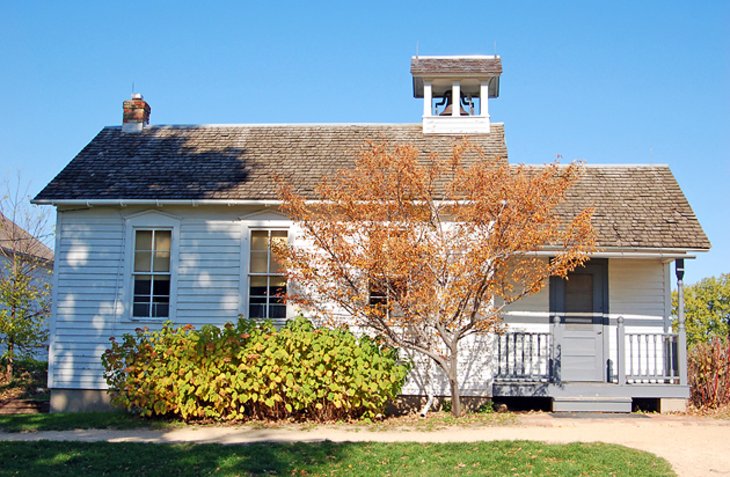
The Gibbs Museum is on the site of a farm that prospered during the late 1800s. The farm's original farmhouse and barn have been fully restored and can be seen by guided tour, led by costumed living history interpreters.
The remainder of the grounds can be explored freely and features authentically constructed replicas of buildings typically found during the time period, including a log-and-sod home and a one-room schoolhouse.
The site also includes a Dakota summer bark lodge and tioti (teepee), as Jane Gibbs had a strong connection with local natives after serving as a missionary prior to marrying her husband, Herman.
Visitors will also see a variety of presentations that depict life on the farm during its heyday, from cooking and crafts to farming and taking care of the animals. The museum also hosts special events during the summer months.
Address: 323 Landmark Center, 75 W. 5th Street, St. Paul, Minnesota
Official site: www.rchs.com/gibbs-farm
14. Bruce Vento Regional Trail & Wildlife Sanctuary
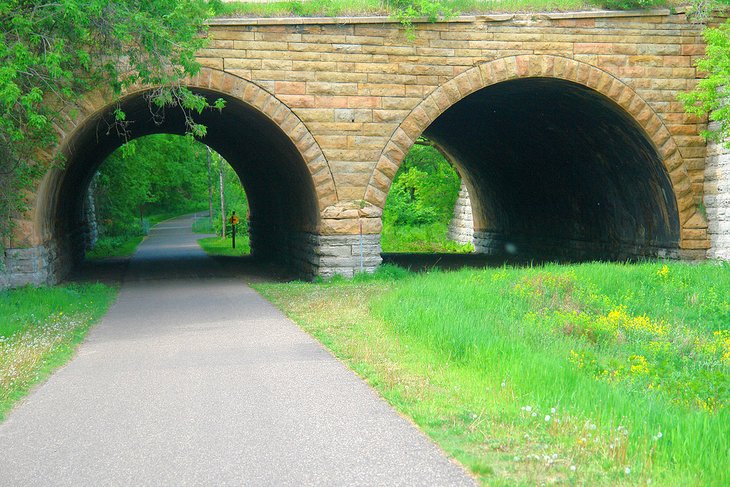
Once an industrial rail yard, this 29-acre park was reclaimed in 2005, allowing native plants and wildlife to return. Today it is home to a 7.6-mile nature trail (15 miles round trip) that welcomes hikers, runners, cyclists, and even their leashed canine friends.
This is a popular spot for bird-watching, with two ponds and a stream that attract waterfowl and grassland birds. Along with migratory and native songbird species, visitors can also spot bald eagles, red-tailed hawks, and turkey vultures that make the sandstone bluffs their home.
Although visitors can't access the interior, the park is also home to a cave known as Wakan Tipi (Spirit House). Interpretive signage describes the history of the cave, including Jonathan Carver's descriptions of native carvings in the sandstone walls from his 1766 visit.
The Bruce Vento Regional Trail is asphalt-paved and quite wide, making it very accessible to wheelchairs and other mobility devices.
Address: 265 Commercial Street, Saint Paul, Minnesota
Official site: https://www.nps.gov/miss/planyourvisit/ventosanctuary.htm
15. Minnesota Transportation Museum
The Minnesota Transportation Museum is located at the Jackson Street Roundhouse, one of the country's last operating roundhouse train turntables.
During their visit, tourists can watch experts continue their work restoring antique equipment and even watch blacksmiths working in the forge. The museum also has exhibits that explore the history and significance of rail travel, both commercial and passenger.
Among the most remarkable trains on display are three Northern Pacific steam locomotives. This includes the Northern Pacific 2156, built in 1909; the Northern Pacific 328; and the Northern Pacific 2153, which pulled the North Coast Limited passenger train until the 1950s when diesel locomotives took over the job.
Visitors who stop by on a Sunday can enjoy a train ride as part of admission, and there are several other rides available throughout the week, including a 90-minute trip through the St. Croix River valley and a one-hour trip from nearby Osceola to Dresser. There are also several themed rides throughout the summer, including foliage sightseeing trips.
Address: 193 Pennsylvania Ave, St. Paul, Minnesota
Official site: https://transportationmuseum.org/
16. Fitzgerald Theater
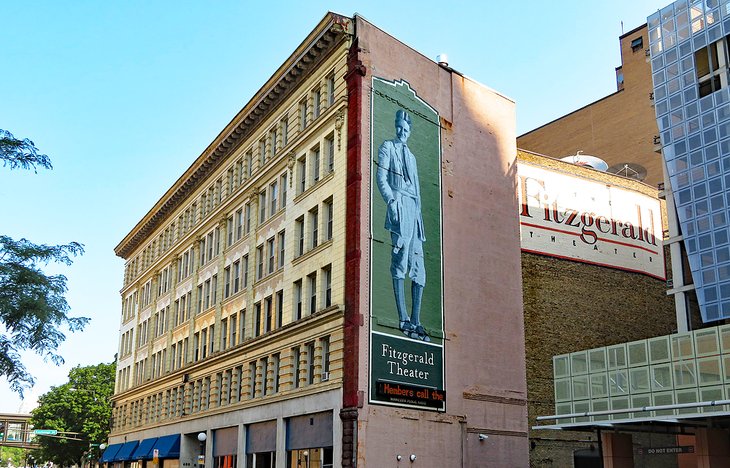
The Fitzgerald Theater is the oldest remaining theater in St. Paul, built in 1910 as the Sam S. Shubert Theater.
In its lifetime, the theater has hosted vaudeville shows, plays and musicals, and live musical performances. It has also served as a movie house that featured international films during its tenure as the World Theater.
The theater's most noteworthy performances occurred during the 1980s and early 1990s during the heyday of Garrison Keillor's A Prairie Home Companion while it was the home of this popular radio show's live performances.
Today, it is an independently owned performance venue that focuses on live music and community productions.
Address: 10 E Exchange Street, St Paul, Minnesota
Official site: https://first-avenue.com/venue/the-fitzgerald-theater/
Where to Stay in Saint Paul for Sightseeing
We recommend these centrally located hotels in downtown Saint Paul with easy access to the city's top attractions:
- The Saint Paul Hotel: This luxury historic hotel is housed in a landmark building featuring elegant decor, valet parking, and a 24-hour rooftop fitness center.
- Hyatt Place St. Paul / Downtown: This hotel offers mid-range pricing and features contemporary decor, floor-to-ceiling windows, and a well-equipped fitness center.
- Hampton Inn and Suites Downtown St. Paul: Tourists will find affordable rates here within walking distance of the Mississippi River; the hotel features spacious rooms and an indoor pool.
- Historic District BnB: For those who enjoy historic bed and breakfasts, this is an excellent choice, offering elegant rooms in a beautifully restored 1896 home in the Ramsey Hill neighborhood.
Map of Things to Do in St. Paul, MN
Saint Paul, MN - Climate Chart
| Average minimum and maximum temperatures for Saint Paul, MN in °C | |||||||||||
| J | F | M | A | M | J | J | A | S | O | N | D |
| -5 -14 | -1 -11 | 6 -4 | 14 2 | 22 9 | 26 14 | 28 17 | 27 16 | 22 11 | 15 4 | 5 -3 | -3 -11 |
| PlanetWare.com | |||||||||||
| Average monthly precipitation totals for Saint Paul, MN in mm. | |||||||||||
| 26 | 20 | 49 | 65 | 95 | 127 | 112 | 111 | 81 | 64 | 53 | 26 |
| Average monthly snowfall totals for Saint Paul, MN in cm. | |||||||||||
| 30 | 23 | 28 | 9 | 0 | 0 | 0 | 0 | 0 | 1 | 17 | 28 |
| Average minimum and maximum temperatures for Saint Paul, MN in °F | |||||||||||
| J | F | M | A | M | J | J | A | S | O | N | D |
| 23 6 | 30 13 | 42 24 | 58 36 | 71 48 | 79 58 | 83 63 | 81 61 | 72 52 | 59 40 | 41 26 | 27 12 |
| PlanetWare.com | |||||||||||
| Average monthly precipitation totals for Saint Paul, MN in inches. | |||||||||||
| 1.0 | 0.8 | 1.9 | 2.5 | 3.7 | 5.0 | 4.4 | 4.4 | 3.2 | 2.5 | 2.1 | 1.0 |
| Average monthly snowfall totals for Saint Paul, MN in inches. | |||||||||||
| 12 | 9.0 | 11 | 3.4 | 0 | 0 | 0 | 0 | 0 | 0.3 | 6.5 | 11 |
More Related Articles on PlanetWare.com
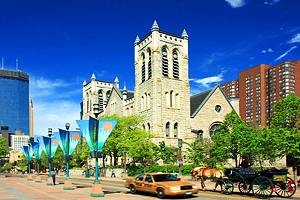
Minnesota Cities: Minnesota's major cities are home to many of the state's top tourist attractions, and St. Paul's twin, Minneapolis, is no exception. Many of the highlights can be reached via its extensive system of multi-use paths, perfect for eco-conscious tourists. Situated just over an hour south of the twin cities, Rochester is known for its rich culture and sense of community, despite its status as the second-largest metropolitan area in the state.
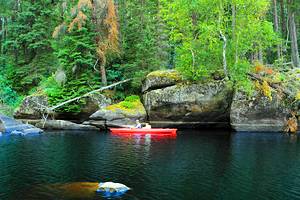
Northern Minnesota: To the north of St. Paul, Duluth offers a wide range of things to do along the shores of Lake Superior and on the water. About an hour northwest of here, Grand Rapids, Minnesota is best known to tourists as the birthplace of Judy Garland. Grand Rapids is also a great starting point for those wanting to explore Voyageurs National Park, just one of the many top-rated state and national parks in Minnesota.
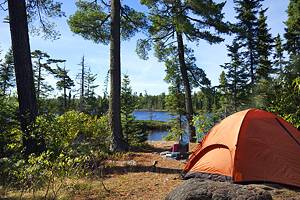
Back to Nature: Those looking for a more rustic vacation will find several excellent campgrounds in Minnesota. Especially in the northern regions, nature lovers have almost limitless choices of highly rated hiking trails, where you can see everything from old-growth forests to valleys carved by rivers. You will also find a good selection of top mountain bike trails throughout the more rural areas of the state.
